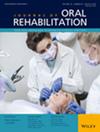Laryngeal Penetration and Aspiration Among Patients With Oropharyngeal and Oesophageal Dysphagia: A Meta-Analysis and Moderator Analysis
Abstract
Background
Laryngeal penetration and aspiration are major global health concerns, especially in patients with dysphagia. Despite their serious impact, previous meta-analyses evaluating their overall prevalence remain limited.
Objective
To estimate the prevalence of laryngeal penetration and aspiration in patients with oropharyngeal and oesophageal dysphagia.
Materials and Methods
A comprehensive search of seven databases (Embase, Scopus, Web of Science, PubMed, CINAHL and ProQuest) was conducted without restriction by region, language, or publication date. A generalised linear mixed model and random-effects model were used to calculate pooled prevalence estimates. Moderator analyses were performed to explore potential sources of heterogeneity. All statistical analyses were conducted using R software.
Results
A total of 46 studies involving 5535 patients with dysphagia across 19 countries were included. The pooled prevalence of laryngeal penetration was 48.5%, highest among those with oropharyngeal dysphagia and in North America. Aspiration prevalence was 30.0%, highest in Europe. The prevalence of laryngeal penetration and aspiration was between 49.3% and 29.4%, respectively, in patients with oropharyngeal dysphagia and 31.5% and 12.6%, respectively, in those with oesophageal dysphagia. Significant moderators included hospital setting, male sex, oropharyngeal dysphagia, dysphagia aetiology, pharyngeal reflex delay, dysfunction of the vallecula and pyriform sinuses, impaired laryngeal closure, oral residue, oral feeding, laryngotracheal aspiration, silent aspiration and current smoking.
Conclusions
Laryngeal penetration and aspiration are highly prevalent in dysphagia, particularly in oropharyngeal dysphagia. Early identification of risk factors and targeted interventions are critical to minimising complications and enhancing patient outcomes.
Clinical Significance
Understanding high prevalence and key moderators of laryngeal penetration and aspiration in dysphagia, especially oropharyngeal types, underscores the need for proactive screening and personalised management to prevent laryngeal penetration and aspiration-related complications and improve quality of care.


 求助内容:
求助内容: 应助结果提醒方式:
应助结果提醒方式:


